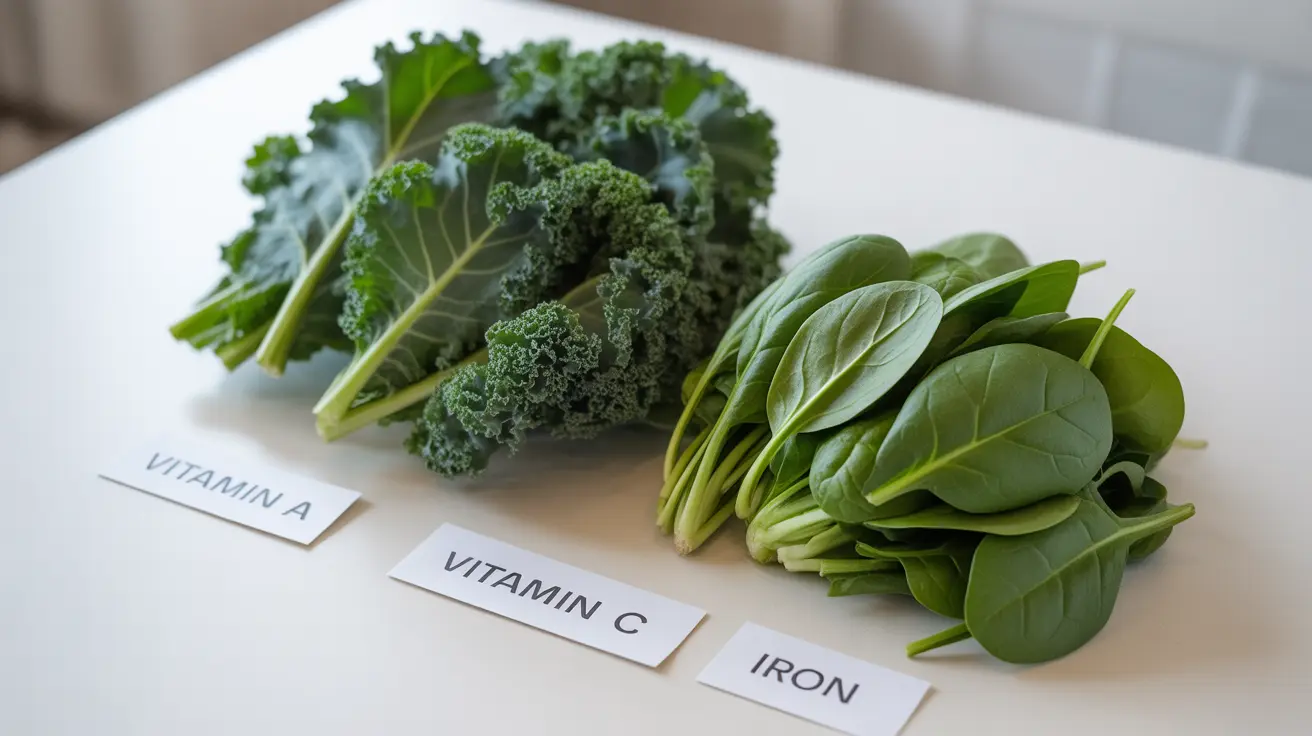When it comes to leafy greens, kale and spinach are both nutritional powerhouses that have earned their reputation as superfoods. Each offers unique health benefits and nutritional profiles, making the choice between them a common dilemma for health-conscious individuals. Understanding their differences can help you make the best dietary choices for your specific health needs.
In this comprehensive guide, we'll explore the distinct nutritional qualities, health benefits, and practical uses of both kale and spinach, helping you maximize their potential in your diet.
Nutritional Composition: Breaking Down the Basics
Both kale and spinach pack impressive nutritional profiles, but they excel in different areas. Kale is particularly rich in vitamins K, C, and A, while spinach stands out for its iron and magnesium content. Let's examine their key nutritional differences:
Kale's Nutritional Profile
- Vitamin K: One cup provides over 684% of daily needs
- Vitamin C: Contains about 134% of daily requirements
- Vitamin A: Offers 206% of daily needs
- Fiber: 2.6g per cup of raw kale
- Calcium: 90mg per cup
Spinach's Nutritional Profile
- Iron: 2.7mg per cup of raw spinach
- Magnesium: 24mg per cup
- Folate: 58.2 mcg per cup
- Vitamin K: 145mcg per cup
- Potassium: 167mg per cup
Health Benefits and Applications
Cardiovascular Health
Both greens contribute significantly to heart health, but through different mechanisms. Kale's high fiber content helps reduce cholesterol levels, while spinach's nitrate content supports healthy blood pressure. Regular consumption of either green can contribute to improved cardiovascular function.
Bone Health
Kale's exceptional vitamin K content makes it particularly beneficial for bone health. While spinach also contains vitamin K, its high oxalate content can affect calcium absorption. For optimal bone health benefits, kale might have a slight advantage.
Preparation Methods and Storage
Maximizing Nutritional Value
The way you prepare these greens can significantly impact their nutritional benefits. Light steaming or consuming them raw typically preserves the most nutrients. However, both greens have different optimal preparation methods:
Kale Preparation Tips
- Massage raw kale with olive oil to break down tough fibers
- Remove thick stems before cooking
- Steam briefly (2-3 minutes) to maintain nutrients while improving digestibility
- Store in a sealed container in the refrigerator for up to 5 days
Spinach Preparation Tips
- Use fresh spinach within 3-5 days
- Store with paper towels to absorb excess moisture
- Light cooking can actually increase the availability of some nutrients
- Combine with vitamin C-rich foods to enhance iron absorption
Frequently Asked Questions
What are the main nutritional differences between kale and spinach?
Kale is particularly high in vitamins K, C, and A, and provides more fiber than spinach. Spinach, on the other hand, contains higher levels of iron, magnesium, and folate. Both are excellent sources of antioxidants but with different compositions.
Which is healthier for boosting vitamin C and fiber intake, kale or spinach?
Kale is the superior choice for both vitamin C and fiber intake. One cup of raw kale provides about 134% of daily vitamin C needs and 2.6g of fiber, while spinach contains less of both nutrients.
Are there any health risks associated with eating kale or spinach regularly?
While both are generally safe, spinach's high oxalate content may be a concern for those prone to kidney stones. Kale contains goitrogens, which could affect thyroid function if consumed in very large amounts by people with thyroid issues. Both should be washed thoroughly to remove pesticides.
How do kale and spinach compare in supporting heart and bone health?
Both vegetables support heart and bone health, but in different ways. Kale's higher vitamin K content makes it particularly beneficial for bone health, while spinach's nitrate content specifically supports cardiovascular function. Both contain antioxidants that benefit heart health.
What are the best ways to prepare kale and spinach to maximize their nutritional benefits?
For kale, massage raw leaves with olive oil for salads or steam briefly to maintain nutrients while improving texture. For spinach, light cooking can actually increase the availability of certain nutrients. Both can be added to smoothies, sautéed, or eaten raw in salads. Avoid overcooking to preserve nutritional value.




